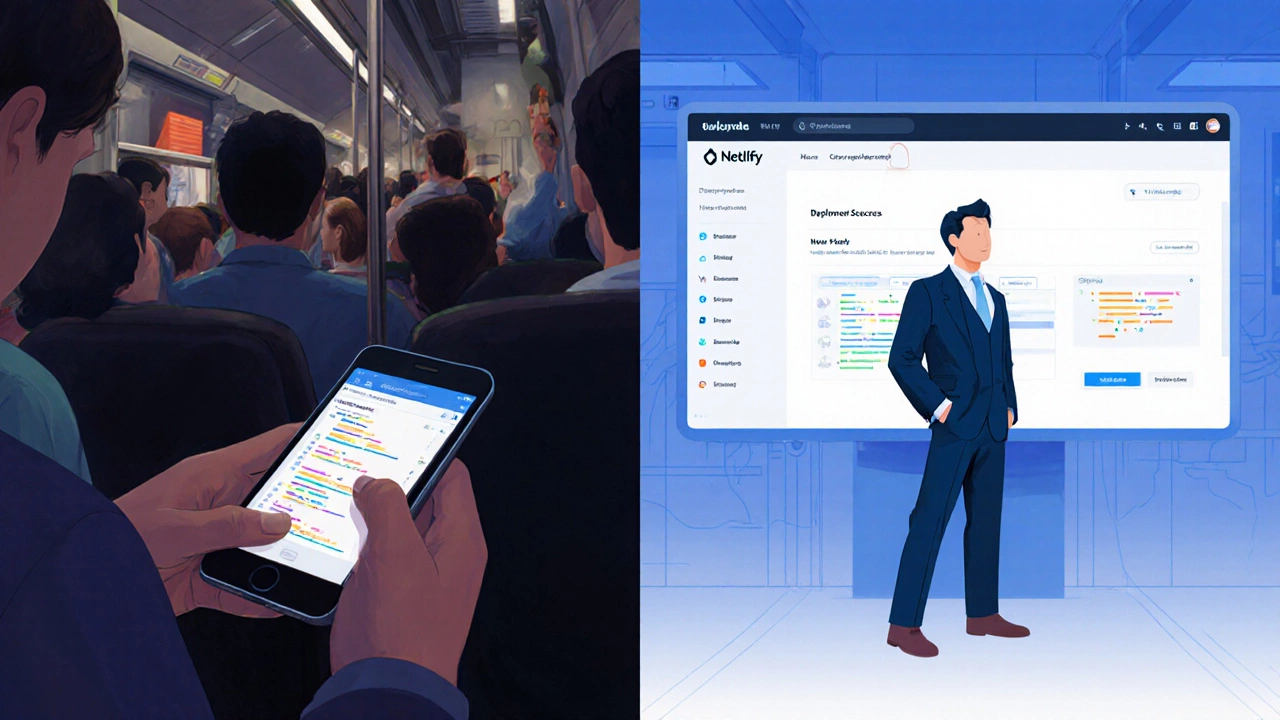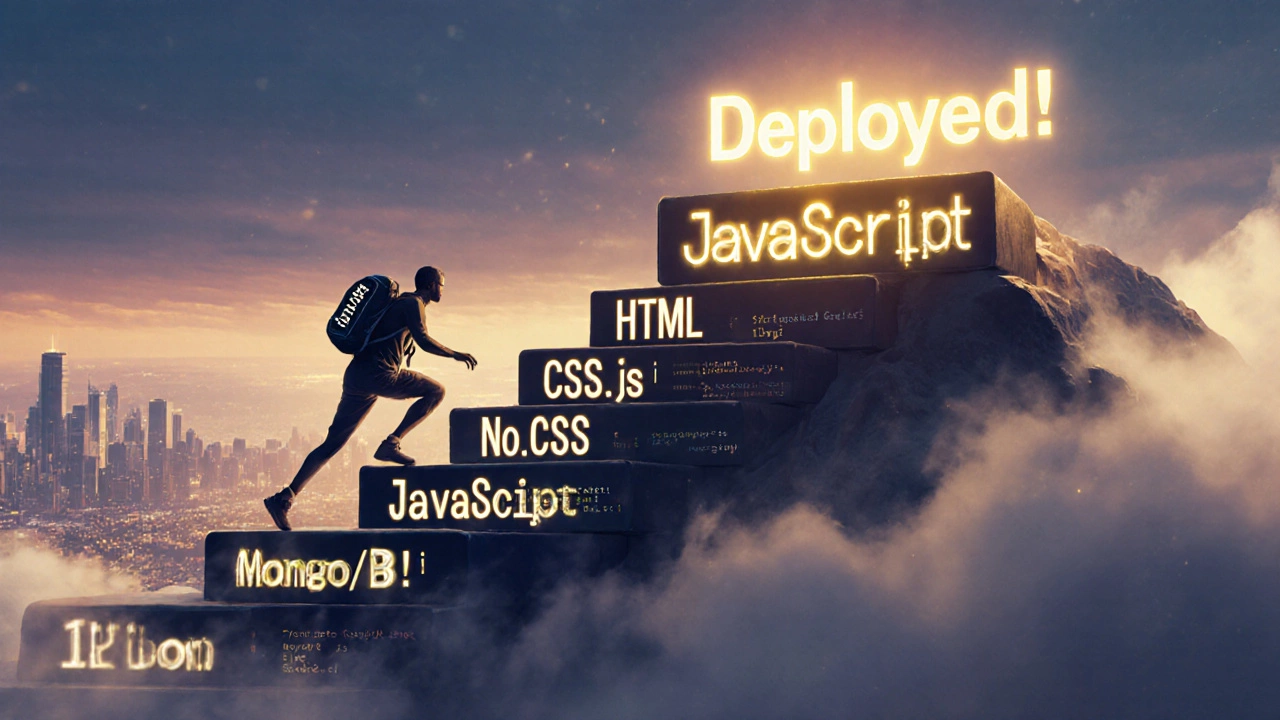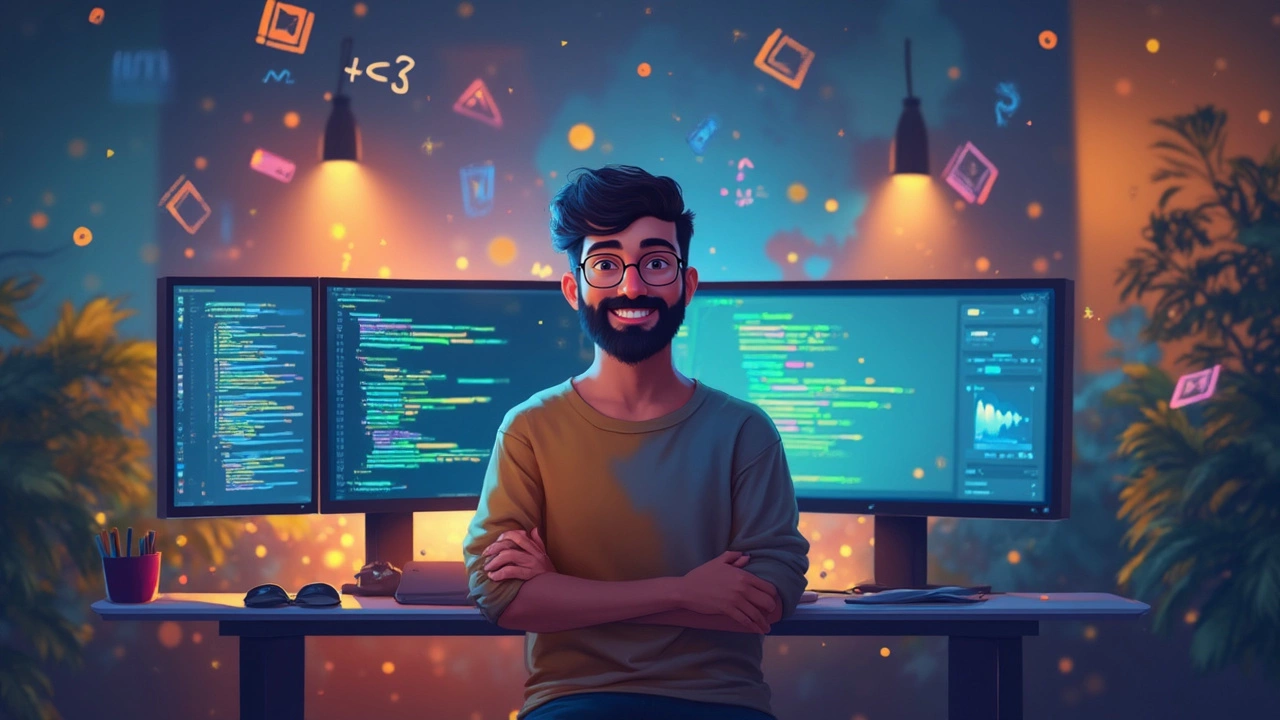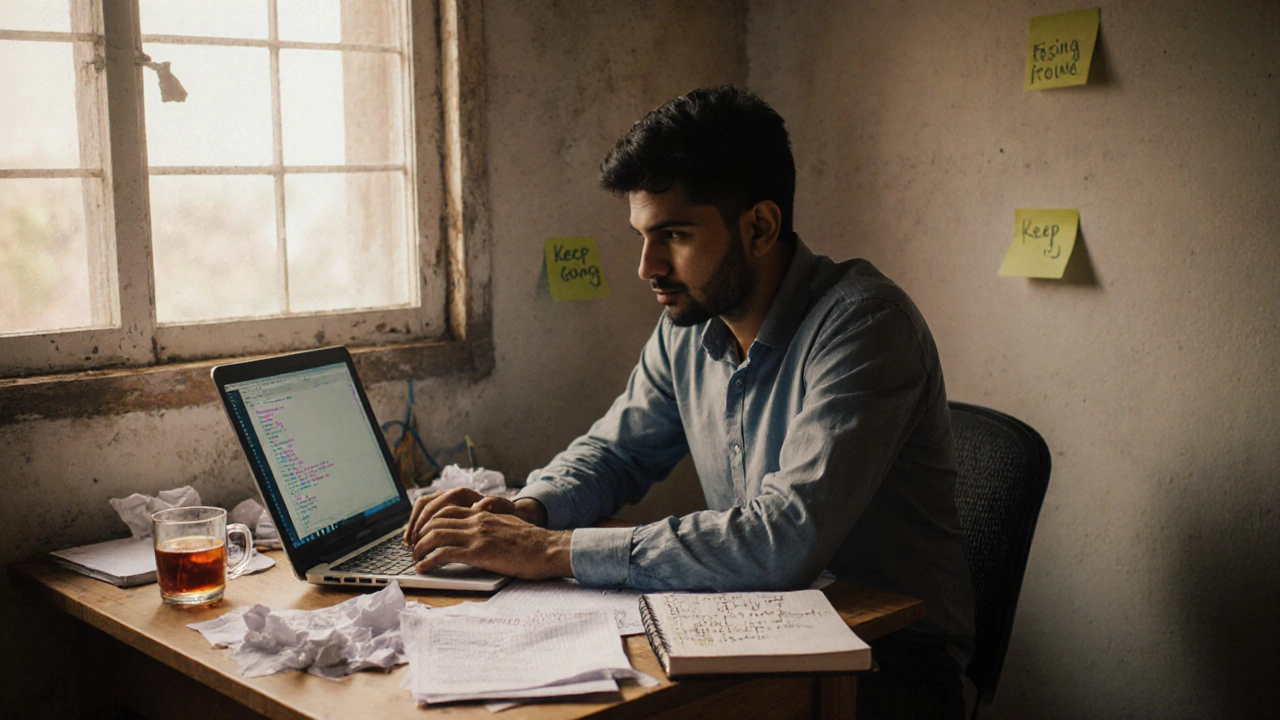Full Stack Development Time Calculator
See how long it takes to become a full stack developer based on your daily commitment. This calculator estimates timeframes based on real-world learning journeys of non-IT professionals.
Your Learning Plan
What to Expect
Your Personalized Learning Timeline
Based on your inputs, you can expect to complete your learning journey in approximately:
with consistent daily practice.
Month 1-2
Learn HTML, CSS, and basic JavaScript. Build 3-5 simple static pages.
Month 3-4
Add backend with Node.js or Python. Connect to a database.
Month 5-6
Build a full project like a to-do app or blog.
Month 7-8
Deploy your app. Create a portfolio. Start applying for jobs.
Ever watched someone build a website from scratch-frontend, backend, database, deployment-and thought, ‘I could never do that’? You’re not alone. Most people assume full stack development is for computer science grads, ex-engineers, or tech insiders. But here’s the truth: full stack development isn’t about where you started. It’s about what you’re willing to learn next.
In 2025, over 40% of new full stack developers in India came from non-IT backgrounds-teachers, nurses, sales reps, artists, even stay-at-home parents. They didn’t have degrees in computer science. They didn’t grow up coding. They just started with one small step. And you can too.
What Does a Full Stack Developer Actually Do?
A full stack developer handles everything that makes a website work-from what users see on their screen to the servers and databases behind the scenes. That means:
- Frontend: Building the buttons, layouts, and animations users interact with using HTML, CSS, and JavaScript.
- Backend: Managing server logic, APIs, and data flow using languages like Node.js, Python, or Ruby.
- Database: Storing and retrieving user data with tools like PostgreSQL, MongoDB, or MySQL.
- Deployment: Putting the app online using platforms like Netlify, Vercel, or AWS.
It sounds like a lot. And it is. But you don’t need to master all of it at once. Think of it like learning to drive. You don’t start by rebuilding the engine. You start by turning the key, pressing the gas, and learning how to steer.
You Don’t Need a Degree. You Need a Plan.
Many people quit before they start because they think they need to go back to school. You don’t. A degree helps in some corporate roles, but for full stack work, your portfolio matters more than your diploma.
Here’s what actually works for non-IT people:
- Start with HTML and CSS. These are the building blocks of every website. Spend a week making a simple personal page-your name, a photo, a short bio. No coding experience needed. Free resources like freeCodeCamp or W3Schools walk you through it step by step.
- Then add JavaScript. Once you can make static pages, learn how to make them interactive. Add a button that changes color when clicked. Show a calendar that updates automatically. These small wins build confidence fast.
- Learn a backend language. Pick one: Node.js (JavaScript on the server) or Python (with Flask or Django). Node.js is easier if you already know JavaScript. Python is simpler if you prefer plain English-like syntax. Both have huge communities and tons of free tutorials.
- Connect to a database. Learn how to save user info or blog posts. MongoDB is beginner-friendly because it stores data like JSON-something you’ve probably seen before.
- Deploy your first app. Use Vercel or Netlify to make your site live. No servers to manage. Just click deploy. Seeing your code run on the internet is the best motivation you’ll ever get.
That’s it. Five steps. No college. No certification. Just time, patience, and practice.
Real Stories: People Who Did It
Meet Priya, a former schoolteacher from Lucknow. She started learning HTML during her kids’ nap time. Six months later, she built a small app to help parents track their children’s reading progress. She now freelances on Upwork, earning ₹35,000 a month.
Raj, who worked in retail in Jaipur, got laid off in 2023. He spent 8 hours a day for 10 months learning full stack. He didn’t have a laptop at first-he used his phone for coding practice. Today, he’s a junior developer at a startup in Bangalore.
These aren’t exceptions. They’re the new normal. The barrier to entry has never been lower. You don’t need to be a genius. You just need to show up every day.

What You’ll Struggle With (And How to Get Past It)
Everyone hits walls. Here are the most common ones-and how to fix them:
- ‘I don’t understand error messages.’ That’s normal. Copy the error into Google. 90% of the time, someone else has solved it. Stack Overflow is your best friend.
- ‘I feel overwhelmed by all the tools.’ Don’t try to learn React, Next.js, Express, MongoDB, and Docker all at once. Stick to one stack: HTML/CSS/JS → Node.js → MongoDB. Master that before adding more.
- ‘I keep forgetting what I learned.’ You’re supposed to. Memory fades. Build small projects. Reuse code. Repeat. Coding is a skill, not a fact you memorize.
- ‘I’m not ‘techy.’ I don’t speak the lingo.’ You don’t need to. Focus on solving problems, not sounding smart. The goal isn’t to impress. It’s to build something that works.
Progress isn’t linear. Some days you’ll code for hours. Other days, you’ll stare at a blank screen. That’s okay. What matters is that you come back tomorrow.
How Long Does It Really Take?
There’s no magic number. But here’s what most non-IT people experience:
- Month 1-2: Learn HTML, CSS, basic JavaScript. Build 3-5 simple pages.
- Month 3-4: Add backend with Node.js or Python. Connect to a database.
- Month 5-6: Build a full project-like a to-do app, blog, or small e-commerce site.
- Month 7-8: Deploy it. Share it. Get feedback.
That’s 6-8 months of consistent effort. Not 20 hours a week. Just 1 hour a day. Five days a week. That’s less time than most people spend scrolling TikTok.

Where to Start (Free and Reliable)
You don’t need to pay for courses. Here are the best free resources:
- freeCodeCamp - Complete full stack curriculum with projects. Certificates included.
- The Odin Project - Project-based, no fluff. Loved by self-taught developers worldwide.
- YouTube: Web Dev Simplified - Clear, short videos on every topic you’ll need.
- MDN Web Docs - The official reference for HTML, CSS, and JavaScript. No marketing. Just facts.
Don’t jump between 10 courses. Pick one. Stick with it. Finish it. Then move on.
What Comes After You Learn?
Once you’ve built 2-3 projects, you’re ready to start applying. You don’t need a degree to get hired. You need proof you can build things.
Here’s how:
- Put your projects on GitHub. Write clear README files explaining what they do.
- Create a simple portfolio site. Just one page. Link to your projects.
- Apply for internships, junior roles, or freelance gigs on Upwork or Fiverr.
- Join local meetups or online communities. Reddit’s r/learnprogramming is full of people exactly like you.
Companies in India are hiring non-traditional candidates faster than ever. Startups don’t care if you went to IIT. They care if you can fix their website, add a login system, or make their app load faster.
Final Thought: You’re Not Behind. You’re Just Starting.
There’s no age limit. No IQ requirement. No secret club. Full stack development is open to anyone who’s willing to learn. The tech world doesn’t need more people who memorized algorithms. It needs more people who solve real problems.
If you’ve read this far, you’re already ahead of 90% of the people who said, ‘I’ll start tomorrow.’
Start today. Not next week. Not after the holidays. Today.
Open your browser. Go to freeCodeCamp. Click ‘Learn Responsive Web Design.’ Start with the first lesson. Do it now.
That’s how it begins.
Can someone with no technical background become a full stack developer?
Yes. Thousands of people without any tech background have become full stack developers. What matters is not your past, but your willingness to learn step by step. Start with HTML and CSS, then add JavaScript, a backend language, and a database. Build small projects consistently. Employers care more about what you can build than what degree you have.
How long does it take for a non-IT person to learn full stack development?
Most people take 6 to 8 months with consistent daily practice-about 1 hour a day, 5 days a week. The timeline depends on how much time you can commit, not your background. The key is building real projects, not just watching videos. After 3 months, you should have a working app. After 6 months, you’ll be ready to apply for jobs.
Do I need a computer science degree to get a job as a full stack developer?
No. Most startups and mid-sized companies in India hire based on skills, not degrees. Your GitHub profile, portfolio website, and ability to solve real problems matter more than your diploma. Even big companies like Zomato and Swiggy now hire self-taught developers through coding challenges and project reviews.
What’s the easiest programming language for a beginner to start with?
JavaScript is the easiest for full stack because it works on both the frontend (browser) and backend (with Node.js). You only need to learn one language to do both. If you prefer simpler syntax, Python (with Flask) is also a great choice. Avoid jumping into Java or C++-they’re harder for beginners and not needed for most web jobs.
Can I learn full stack development while working a full-time job?
Absolutely. Most successful non-IT developers learn while working. You don’t need to quit your job. Just dedicate 30-60 minutes a day. Use lunch breaks, early mornings, or evenings. Consistency beats intensity. One hour a day for 6 months will get you further than 10 hours in one weekend.
Is it too late to start learning full stack development at 30, 40, or older?
No. Age doesn’t matter in tech if you can deliver results. Many developers in their 40s and 50s have switched careers successfully. In fact, life experience helps-you understand user needs better, manage time more wisely, and stay patient through setbacks. The tech industry needs diverse perspectives. Your background is an asset, not a barrier.


